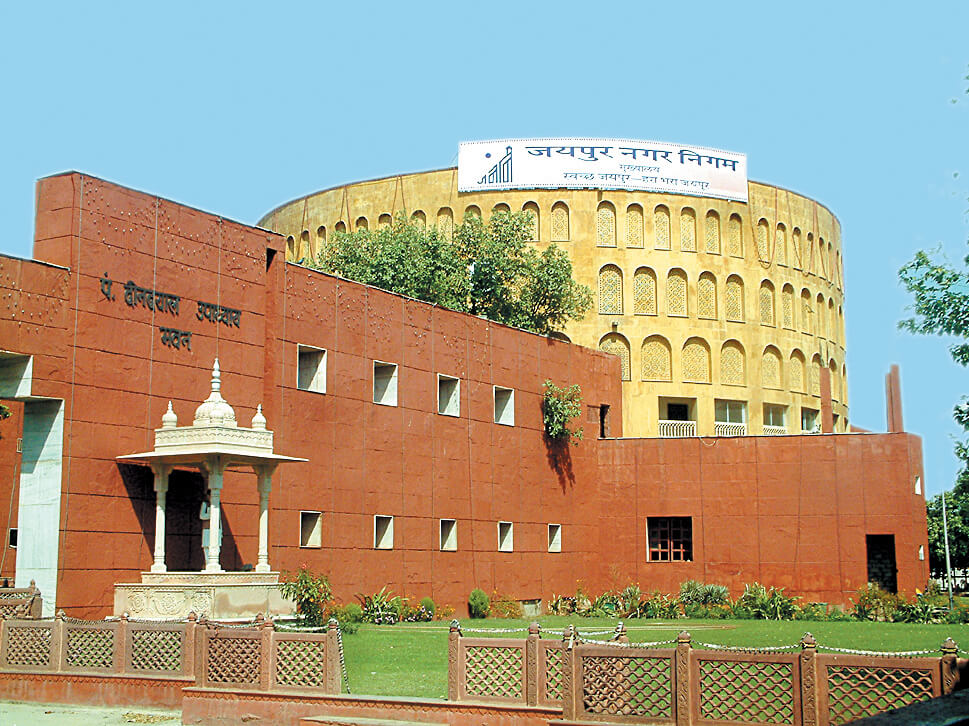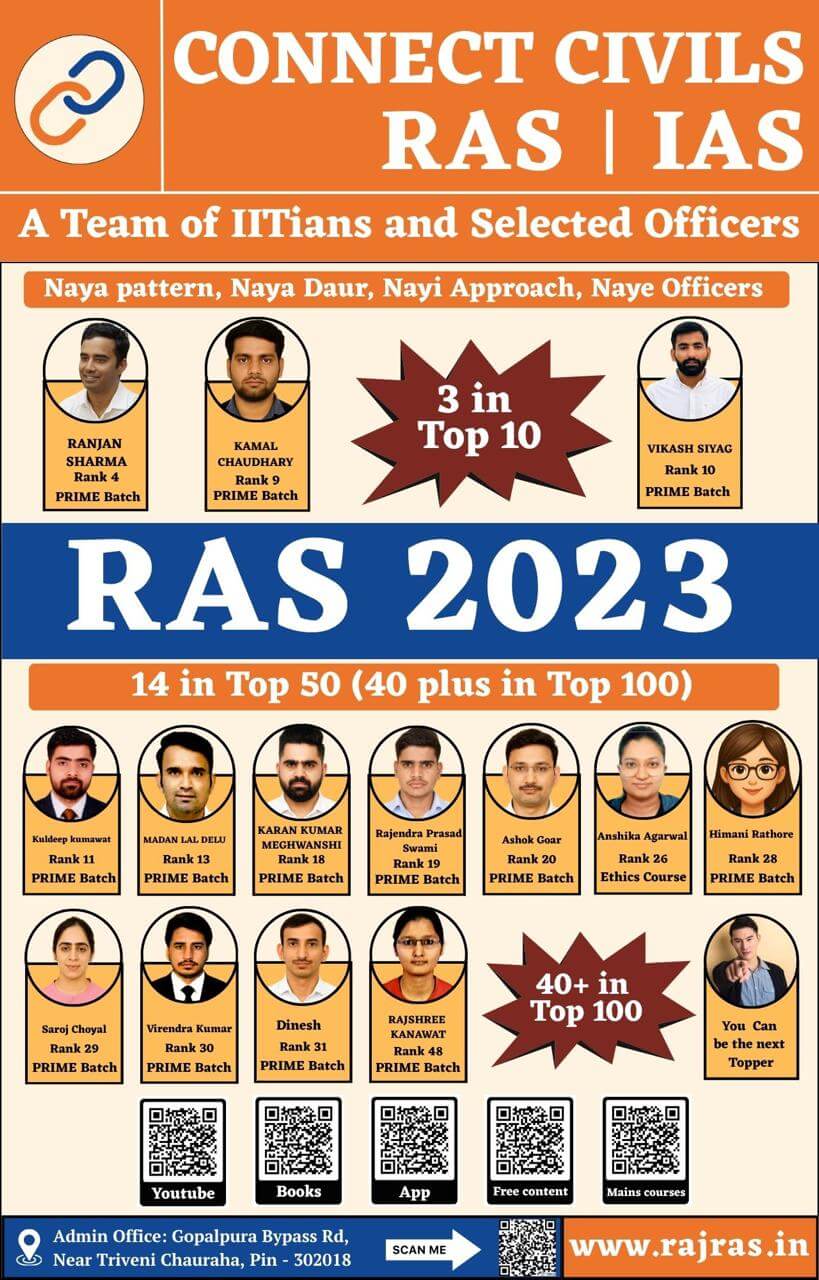The term Urban local Government in India signifies the governance of urban area by people through elected representatives. There are eight types of urban local governments currently existing in India:
- Municipal Corporations.
- Municipality.
- Notified area committee.
- Town area committee.
- Cantonment board.
- Township.
- Port trust.
- Special purpose agency.
Historical Background of Urban Local Government
The origin of Municipal Administration in India dates back to 1687 when a Municipal Corporation was set up in Madras. In 1726, Municipal Corporations were setup in Bombay and Calcutta. Lord Ripon issued a resolution for local self government that continued to influence the development of local self government in India till 1947. He is thus called as father of local self-government in India.
After Independence, Rajasthan Town Municipalities Act was promulgated in 1951 by repealing the existing princely States’ municipal laws. Subsequently, due to reorganisation of the State of Rajasthan, all the existing municipal laws1 including the Act of 1951 were replaced by the Rajasthan Municipalities Act, 1959 (Act). Later, 43 rules were incorporated there under by State Government from time to time.
Constitution (74th Amendment) Act, 1992 inserted new Articles 243-P to 243-ZG providing for the legislature to endow certain powers and the duties to the municipalities relating to 18 matters mentioned in Twelfth Schedule.
Urban Local Government: Constitutional Provisions
The Constitution (74th Amendment) Act, 1992 inserted new Part- IX A to the Constitution of India. It is entitled as ‘The Municipalities’ and consists of Articles 243-P to 243-ZG . Additionally, the act has also added Twelfth Schedule that contains 18 functional items of municipalities.
Significance of the Act:
Earlier, State Governments were free to manage their local bodies as they wished. The Amendment made statutory provisions for the establishment, empowerment and functioning of urban local self-governing institutions.
Salient Features of the Act:
- Three types of Municipalities: It provides for the constitution of 3 types of Municipalities depending upon the size and area namely:
- Municipal Corporation – for a larger Urban area.
- Municipal Council – for smaller Urban area
- Nagar Panchayat – (by whatever name called) for a transitional area
- Composition of Municipal Bodies:
- All seats shall be filled by direct elections from the territorial constituencies known as wards.
- The member of the Rajasthan Legislative Assembly representing a constituency which comprises wholly or partly the area of a Municipality.
- Three persons or ten percent of the number of elected members of the Municipality, whichever is less, having special knowledge or experience in municipal administration, to be nominated by the State Government by notification in the Official Gazette
- The member of the House of the People representing a constituency which comprises wholly or partly the area
- Wards Committees: The Act provides for the constitution of Ward Committees, consisting of one or more wards, within the territorial area of a Municipality, with a population of 3 lakhs or more.
- Reservation of seats: In order to provide for adequate representation of Scheduled Caste/ Scheduled Tribe (SC/ST) and of women in the Municipal Bodies, provisions have been made for reservation of seats in every Municipality.
- Duration of Municipalities: The Municipality has a fixed term of 5(five) years from the date appointed for its first meeting.
- Elections: The State Election Commission of Rajasthan discharges its constitutional duty by way of preparing electoral rolls and holding elections for Municipal bodies under Article 243ZA. The manner of election of Chairperson of Municipalities has been left to be specified by the State Legislature.
- Finance Commission: The Finance Commission constituted under Article 243-I to review the financial positions of Panchayati Raj Institutions shall also review the financial position of the Municipalities and will make recommendations to the Governor.
- Committee for District Planning: There shall be constituted in every State at the District level a District Planning Committee to consolidate the plans prepared by the Panchayats and the Municipalities in the District and to prepare a Draft Development Plan for the District as a whole.
- Metropolitan Planning Committees: It is provided in Article 243-ZE of the Constitution that there shall be constituted in every Metropolitan area a Metropolitan Planning Committee to prepare a Draft Development Plan for the Metropolitan area as a whole.
Major Features of the Act:
The main provisions of this Act can be grouped under two categories–compulsory and voluntary. Some of the compulsory provisions which are binding on all States are:
- (i) Constitution of nagar panchayats, municipal councils and municipal corporations in small, big and very big urban areas respectively;
- (ii) Reservation of seats in urban local bodies for Scheduled Castes / Scheduled Tribes roughly in proportion to their population;
- (iii) Reservation of seats for women up to one-third seats;
- (iv) The State Election Commission, constituted in order to conduct elections in the panchayati raj bodies (see 73rd Amendment) will also conduct elections to the urban local self- governing bodies;
- (v) The State Finance Commission, constituted to deal with financial affairs of the panchayati raj bodies also looks into the financial affairs of the local urban self-governing bodies;
- (vi) Tenure of urban local self-governing bodies is fixed at five years and in case of earlier dissolution fresh elections are held within six months;
Some of the voluntary provisions which are not binding, but are expected to be observed by the States are:
- (i) Giving voting rights to members of the Union and State Legislatures in these bodies;
- (ii) Providing reservation for backward classes;
- (iii) Giving financial powers in relation to taxes, duties, tolls and fees, etc;
- (iv) Making the municipal bodies autonomous and devolution of powers to these bodies to perform some or all of the functions enumerated in the Twelfth Schedule added to the Constitution through this Act and/or to prepare plans for economic development.
Urban Local Government in Rajasthan
In Rajasthan, urban local bodies are called Municipalities, Municipal Councils and Municipal Corporations. There are a total of 190 Urban Local Bodies (ULBs – 1) in Rajasthan including:
- 7 Municipal Corporations (Nagar Nigam): Ajmer, Bharatpur, Bikaner, Jaipur, Jodhpur, Kota, Udaipur
- 34 Municipal Councils (Nagar Parishad)
- 149 Municipalities (Nagar Palika)
Authorities:
Each Municipality has three authorities:
- The Council
- The Council is deliberative & Legislative wing.
- It consists of Councillors directly elected by people.
- Council is headed by Chairman. He presides over all meetings of the council.
- The Standing Committees
- Standing Committees are created to facilitate working of council.
- They deal with public works, taxation, health, finance etc.
- The Chief Executive Officer
- CEO is responsible for day-to-day administration.
- He/She is appointed by State government.
New Initiatives in Urban Governance:
- Jawaharlal Nehru National Urban Renewal Mission (JNNURM)
- Urban Infrastructure Development Scheme for Small and Medium Towns (UIDSSMT)
- Basic Services to Urban Poor (BSUP)
- Integrated Housing & Slum Development Programme (IHSDP)
- National Urban Livelihoods Mission (NULM)
- Smart City
- HRIDAY Cities
- AMRUT City
- SmartRaj: An Indicative Name Given to the Project for Implementation of E-Governance in all the ULBs in the State of Rajasthan
- LED street lighting project: Rajasthan is the state with highest quantity of LED Street light and the first state where LED Street Light National Program (SLNP) is implemented in whole state.
References:
- Urban Local Bodies in Rajasthan: Link
- Local Administration: Question & Answers
- Department of Urban Local Government, Rajasthan: Website
- Rajasthan Municipal Act-2009: PDF


